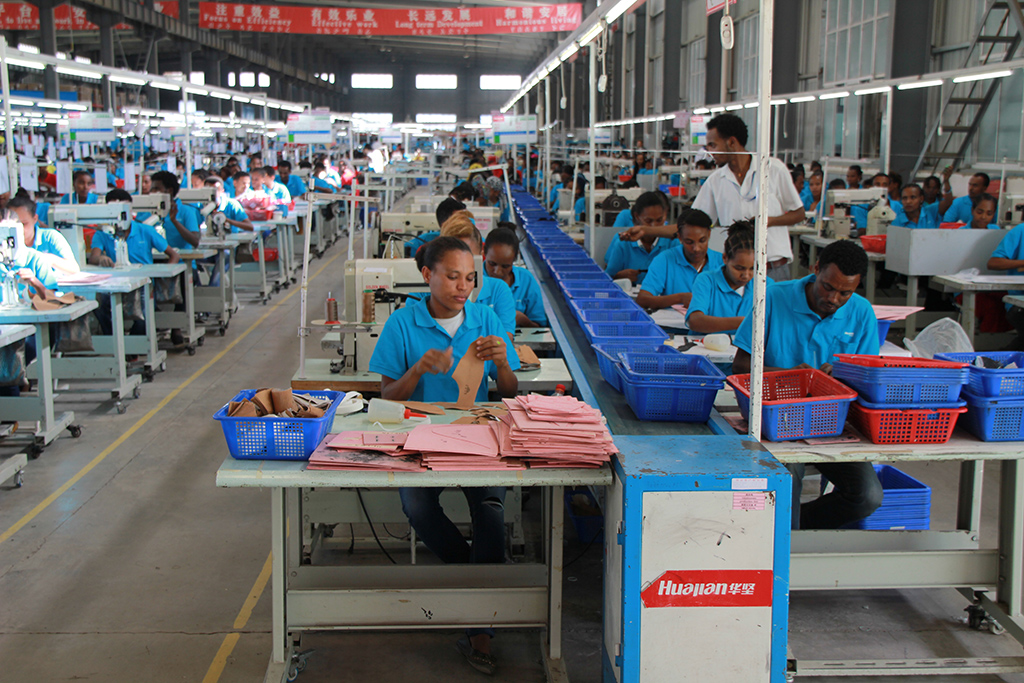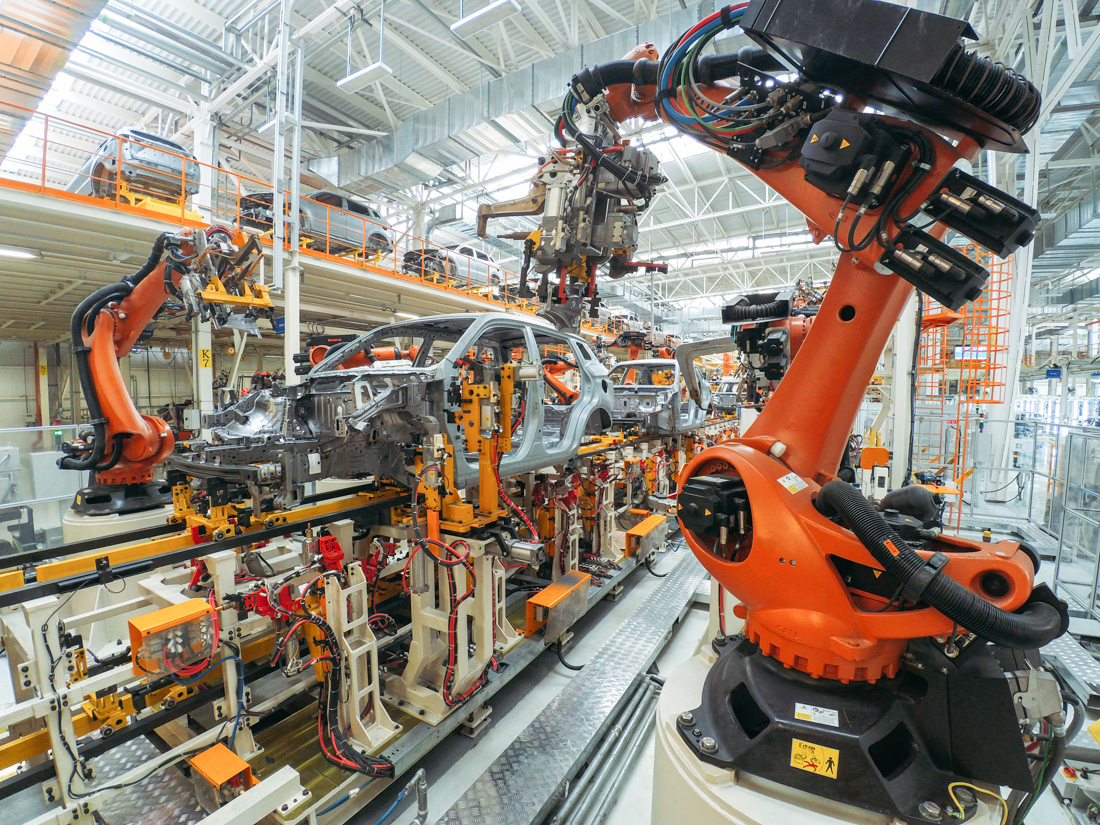Recommended
Why isn’t the entire world developed? No question is more central to economic historians and scholars of development, with the elusive answer directly impacting billions of people living in underdevelopment and poverty.
Perhaps the most prevalent view today is that some countries have remained poor because they have failed to absorb the technologies of advanced economies. However, in a recent paper Diego Comin and Martí Mestieri Ferrer demonstrated that the lag times between when different nations adopt technologies have fallen over the centuries. For example, while it took 131 years for steamships to be adopted in Indonesia after their first use in England, it took 11 years for the PC to reach Vietnam following its invention in the United States. The problem is that the extent to which new technologies diffuse across the population, after their initial adoption, has widened over the same period. The inability of low-income countries to put new technologies into widespread use can account for as much as 80 percent of the “Great Divergence” in incomes between rich and poor countries since 1820.
Is automation stalling industrialization in the developing world?
We all know that the countries which have managed to close the gap over the course of the twentieth century—Japan, Korea, Singapore, Taiwan, and, more recently, China—have done so by adopting technologies invented in the West to modernize industry and create jobs in manufacturing. Yet in our age of automation and advanced robotics, the notion that today’s developing countries can follow the same path has been called into question.
Following the seminal work of William Arthur Lewis, economists see manufacturing industry as a stepping stone toward economic development because of its ability to absorb vast numbers of unskilled workers productively. However, as Dani Rodrik has shown, developing countries are now running out of potential manufacturing jobs much earlier and at significantly lower levels of GDP per capita, compared to early Western industrializers. To be sure, there has been some debate about whether “premature deindustrialization” stems from advances in automation or is entirely due to globalization and the integration of China into the global market for manufactured goods. Yet David Kunst has recently demonstrated that early deindustrialization is driven by the demise of unskilled jobs which can be done by robots.
The policy implication, however, is not that developing countries should refrain from adopting automation technologies. Take India, for example, which has among the lowest penetration rates of robots in the world, with only 3 industrial robots per 10,000 employees. In comparison, South Korea (the most automated country) and China have 631 and 68 robots per 10,000 workers, respectively. The reason that India’s proportion of manufacturing employment has remained flat at around 12 percent for decades is evidently not automation. Rather, it is due to the failure of its manufacturing industry to modernize and become competitive.
That said, even in the “factory of the world”—China—manufacturing jobs are already being shredded. Between its peak in 2013 and 2017, China’s manufacturing employment share declined from 19.3 percent to 17.5 percent. A staggering 12.5 million manufacturing jobs were lost in only four years as robot adoption accelerated and jobs moved to low-income countries.
Indeed, China is now facing a dilemma similar to that of the United States in the 1980s, when American companies were left with the choice of either moving production offshore or automating to maintain competitiveness. As one union leader at General Electric’s Louisville, Kentucky factory told the New York Times in 1984, “The automation had to be done, otherwise we would have lost the plant altogether. Some jobs have been lost for the moment, but we had to accept some changes to keep the factory here. We sure as hell didn’t want those jobs to go somewhere else.” The reasoning in China today is the same: to prevent production from moving to low-cost destinations like Thailand and Vietnam, the government has made its intention to accelerate automation explicit in its five-year plan. And the rapidly falling cost of automation has made this increasingly feasible: A recent study by Citigroup estimates that the payback period for a robot in the Chinese auto industry has already fallen below 2 years.
All the same, robots are still mainly used in heavy industry, like automotive and electrical machinery. One reason is that human labour remains more cost effective when flexibility is essential. For example, many industries significantly increase production ahead of the Christmas shopping season. They can do this by adding more temporary workers to meet additional demand. But it makes little sense to invest in robots that aren’t operating most of the year.
The point is that even though premature deindustrialization is real and driven by automation, the developing world is better off automating than never industrializing at all—as the case of India illustrates. What’s more, because robots remain relatively confined to heavy industry, there is still a window of opportunity to industrialise, even if that window is narrowing as automation progresses. Thus, the ability to adopt new technologies remains key to economic development.
Innovation and its enemies: why don’t countries adopt new technologies?
So, if technological adoption can still help countries grow, we are back in the same conundrum: Why haven’t new technologies been enthusiastically adopted everywhere? There are many explanations, but a prime reason is surely tensions between the pressure to innovate and the desire to maintain the social order and political stability. As the great economist Joseph Schumpeter noted, technological change comes with creative destruction, meaning that there will be losers in the short run. And those losers might oppose new technologies, as the Luddites famously did in nineteenth-century Britain.
The ability of vested interest to hinder the spread of new technologies depends on institutional attributes. Diego Comin and Bart Hobijn have persuasively argued that lobbyists will find it more costly to block technologies that benefit the majority if legislators are politically independent, the judicial system is effective, and political power is dispersed (modern China is an exception, not the pattern). The tension between innovation and conservation, Comin and Hobijn show, is most prominent when new technologies have close predecessor technologies. These technologies often have associated interest groups that engage in intense lobbying. In nineteenth-century China, for example, junk (boat) owners and officials profited handsomely from the rice harvest being shipped through the canals. The introduction of railroads threatened their incomes, and unsurprisingly they did everything to resist it, from the peaceful to the violent. In Japan, in contrast, companies building railroads were treated more favourably because there were no interest groups lobbying against them: besides good access to loans railroad companies were exempted from land taxes. Consequently, by 1898, Japan, Portugal, Spain, and Switzerland all had more kilometres of railway than China, despite being much smaller countries.
Workers may also have an incentive to block new technologies if they are labour-saving. In a 1987 paper Gregory Clark noted that, “When Britain launched the modern factory system in textile production in the late eighteenth century, people had every reason to expect that the Industrial Revolution would soon be a worldwide phenomenon. The new textile technologies were not particularly complex, most textile factory jobs did not require great skill, and every country had a ready local market for yarn and cloth.” Yet as late as 1910, one English cotton textile labourer operated more machines than two Mexican workers, or four Japanese, Indian, or Chinese workers. Clark does not attribute these differences to the relative bargaining power of labour, but such a case can easily be made.
During the Mexican Revolution, for example, powerful unions forced a collective bargaining agreement upon employers which fixed the number of machines that could be operated by each worker. Similarly, it has been argued that the divergence between Japan and India in the early twentieth century reflect different paths taken to labour repression. At the turn of the twentieth century, productivity and wages in Indian and Japanese textile factories were similar. By the 1930s, Japan had significantly increased the number of machines per worker and become the world’s leading exporter of textiles, while the Indian textile industry fell behind under the tariff protection of the British Raj. Because of its surplus labour economy, Japanese companies could easily suppress worker resistance while Indian mills could not; Indian workers simply refused to run more machines.
It has also been suggested that China’s late industrialization can in part be explained by the prevalence of its strong craft guilds, which consistently and vigorously resisted mechanization. Labour unrest over mechanization frequently erupted, like in Hong Kong in 1886, when workers smashed imported sewing machines over employment concerns. In similar fashion, many European cities banned automatic looms in the seventeenth century. Why? Where they were adopted (for example, in the city of Leiden), riots followed. Indeed, European governments regularly banned labour-saving technologies fearing that they would cause social unrest and a challenge to the political status quo.
As I have argued elsewhere, English governments were the first to side with inventors rather than rioting workers, which might also explain why England was the first country to industrialize. Relative to China and the European continent, the political power of the guilds in England declined as markets integrated and they faced cascading competition from regions outside their sphere of influence.
Labour relations shape patterns of technology adoption even today. The reason Argentina has so few railroads, for example, is due to the political clout of the lorry union, which has little interest in competition.
The point is not that labour unions are always bad for economic development. As I have noted, in the twentieth century, labour-management relations played a key role in managing mechanization in the United States. Unions helped make sure that their members benefited from the introduction of increasingly sophisticated machinery, rather than standing in its way. The point is that the key obstacle to economic development lies in the political economy of technological change, rather than in technology itself.
Development as usual?
This is not to suggest that premature deindustrialization driven by automation isn’t a concern. Over the medium- and long-term, accelerating factory automation will require developing countries to devise new growth models that rely less on manufacturing employment. One such model could be what Tyler Cowen has called “cellphones instead of factories.” Rather than exporting manufactured goods, low-income countries could open to cheap consumer goods produced in automated factories in advanced economies. Price discrimination induced by increasing returns to scale would mean that developing countries could get cellphones and other goods at low cost. Real wage increases, in other words, would come from the cheapening of goods.
But that raises the question: what will people do for work? As manufacturing jobs dry up, developing countries will increasingly need to move directly into skilled professional services and high-tech goods. Software and biotechnology firms, it is true, do not employ as many people as the smokestack industries that preceded them, but people employed in these new industries typically earn much higher wages and demand more local services. In the American context, Enrico Moretti estimates that each technology job created in a given city creates an additional 5 jobs locally in nontraded services, while each new manufacturing job only creates 1.6 additional jobs. And more people working in services rather than in factories would come with significant non-monetary benefits: working conditions in the factories of the low-income countries are often appalling. It is better being an Uber driver in Bangladesh than a factory worker.
It is certainly true that as developing countries move up the value chain, their firms will be competing directly with companies in advanced economies. However, local companies at least have the advantage of knowing their customers better. For example, as Kai-Fu Lee has pointed out, one reason why Baidu outcompeted Google in China is that they understood that Chinese customers use search differently. They use it as a shopping mall where they click on various pages for information. American users, in contrast, use search engines more like the Yellow Pages, looking for a specific piece of information. Yet on Google’s global search platform, when Chinese users clicked on a search result, they would be taken away from the search results page. Baidu understood this and opened a new browser window instead.
What’s more, latecomers can continue to buy new technologies from early producers—there is no reason not to buy the most up-to-date equipment so that production will be more sophisticated in terms of capital used. And more importantly, they have the advantage of not being locked into unfavourable infrastructure and housing that might be a disadvantage for the adoption of some new technologies like autonomous cars and drones, potentially allowing them to adopt those technologies faster than advanced economies.
Lastly, digital technologies are making it easier to spread important knowledge and help people learn new skills. As a recent report by the Pathways for Prosperity commission notes: “In the future, we may also see virtual systems which break down the walls of clinics and classrooms, including remote diagnosis via telehealth technologies, remote clinics and reaching out to students in the most remote areas to provide quality education through videoconferencing.”
Stay tuned for more from CGD’s Study Group on Technology, Comparative Advantage, and Development Prospects on the technological headwinds and tailwinds facing the developing world.
Carl Benedikt Frey is Oxford Martin Citi Fellow at the Oxford Martin School at Oxford University, author of "The Technology Trap: Capital, Labor and Power in the Age of Automation," and a member of CGD’s Study Group on Technology, Comparative Advantage, and Development Prospects.
Disclaimer
CGD blog posts reflect the views of the authors, drawing on prior research and experience in their areas of expertise. CGD is a nonpartisan, independent organization and does not take institutional positions.
More Reading







